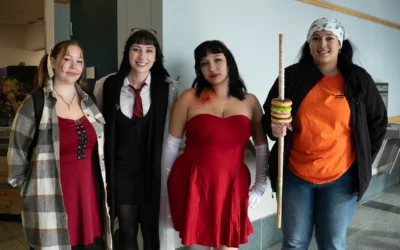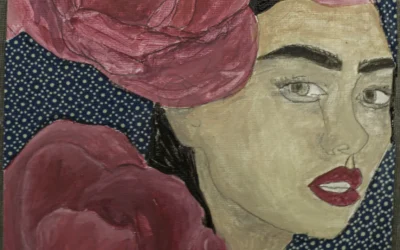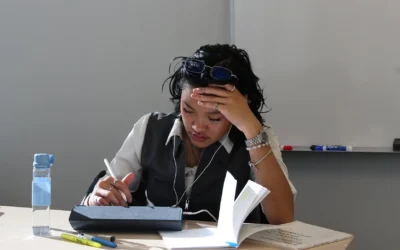When did Halloween costumes start to suck so much?
Nowadays, it’s tough to choose a funny, unique costume without offending someone.
But that’s a good thing, isn’t it? Just like choosing what you believe in and what you say every day, a Halloween costume should be respectful first, before it’s fun and creative.
Costumes that exploit different cultures and races have been rightfully considered taboo and mean-spirited for some time, but stores continue to sell them every year. The biggest culprits are costumes with names such as “Native American Princess,” “Tequila Bandito,” and “Sahara Prince.” Not only are titles like “Native American Princess” and “Sahara Prince” politically incorrect, they also diminish cultures to stereotypes while disrespecting their rich histories and sacred practices.
There’s always been a lot of racism on Halloween and it’s never been justified — only normalized. In the 1930s, dramatic perfomances such as vaudeville popularized blackface, which inspired others to dress as caricatures of African Americans. This was reflective of the discrimination against African Americans at the time, yet blackface remains an issue today.
The more we move forward, the more we need to recognize that these costumes are rude and made in poor taste.
Fortunately, October has become a time to discuss the racism that exists in our communities.
The City of Edmonton officially recognizes that Halloween has historically been racist, and that costumes often stereotype other races and cultures.
The City’s website states that although Halloween is “an inclusive, non-ethnic holiday, there is still an issue of racism.” The website also lays out the fact that “ethnic” costumes, such as stereotypical Asian and Indian costumes, “are racist because they reflect and reinforce the normalcy of ‘whiteness’ at the expense of other races.”
From yellowface to blackface, people seem to love dressing up as other races for Halloween. Whether it’s a Chinese kung-fu master, or a Jamaican bobsledder costume, it’s not cool.
Still, the debate continues about exactly who has permission to wear racially stereotypical costumes.
Some hide behind arguments such as, “I have many friends of such and such race, and they aren’t offended,” or, “if that person can dress up as a white person, why can’t I dress up as one of them?”
However, racial stereotyping isn’t the only problem.
Halloween has also become notorious for its celebration of revealing costumes.
The over-sexualization of certain careers can be insulting to those who don’t want a scandalous stereotype attached to their job title. And yet, at every Halloween party, there’s sure to be at least one sexy nurse, sexy cop, or sexy firefighter.
A member of an online nursing forum, allnurses.com, comments on some of the effects these costumes can have on people working in that particular profession.
“It’s definitely disrespectful — and potentially damaging to the public image of nursing — which in turn makes it more difficult for nurses fighting for respect, fair pay, protection from patients and colleagues who think that crude remarks and the sexual harassment of nurses are OK”.
There’s always been a lot of racism on Halloween and it’s never been justified
— only normalized.
Costume sexualization in general is really weird.
There are sexy costumes that range from Scrabble boards to Elmo. Although a sexy corn-on-the-cob costume will be a conversation starter, sexualizing Bob the Builder is just plain strange.
Celebrity costumes are also very popular on Halloween, and many costume suppliers offer a wide range of topical look-alike kits.
People like their Halloween costumes to leave an impression, and impersonating someone recognizable always gets a few laughs and looks at a party. But while imitation can at times be a form of flattery, some costumes cross the line into being belittling and obnoxious.
Certain costumes depicting celebrities can represent more than just the celebrity.
In 2006, Bill Maher dressed up as an impaled Steve Irwin, who died a month earlier after a stingray stabbed him in the chest. The stunt inspired copy cats to don a costume that essentially mocks a dead man.
A similar trend started in 2009 when TV celebrity Adrianne Curry dressed as Amy Winehouse but decided to accentuate Winehouse’s drug addiction by carrying a fake syringe and strapping a belt around her arm.
In 2015, major costume retailers, such as Wholesale Halloween Costumes, carried a unisex Caitlyn Jenner Halloween costume. The getup mimicked Vanity Fair’s popular photo of Jenner from March of that year, and included a sash that read the cover’s headline: “Call me Caitlyn.” The idea undermines the challenges of gender transition by simplifying it into a costume made for laughs.
Luckily, the costume was quickly discontinued after online commenters violently chastised, boycotted, and petitioned against it. Several media outlets shed light on the issue as well, which expedited the discontinuation.
In a boycott against Spirit Halloween, which sold the costume, petition organizer Addison Rose Vincent wrote: “With a reputation of sexist, racist, and culturally appropriative costumes, we are concerned that this costume will continue your oppressive tradition with a transphobic costume of Caitlyn Jenner … Your profit will only lead to greater transphobia and marginalization of an already at-risk community.”
The petition garnered 19,125 supporters and was delivered to Spirit Halloween.
Surely the obviously offensive and transphobic idea behind the costume should have been enough for a huge retailer like Spirit Halloween to decide against selling it in the first place.
The problem may not only be the companies that manufacture these costumes, but also the ignorant or uninformed consumers that create the demand for them.
There have been countless conversations, articles, and debates about what to wear for Halloween. So, what is an appropriate costume?
As a part of the costume vetting protocol they set in place last year, Brock University’s Students’ Union created guidelines for what students should and should not wear.
The rules are simple: if your Halloween costume has a label indicating that it is in some way a traditional garment for another race or culture, don’t wear it. This includes things like thobes, religious headdresses, and bindis (as listed on the university’s website).
Guidelines also reject costumes that impose humour on sensitive topics like suicide and rape, and forbid the use of blackface or the appropriation of other races.
Even though Halloween is fun, carefree, and maybe a little childish, be conscious that a costume can mean a lot more than what one may think.
Illustration by Kia Valdez Bettcher.




0 Comments